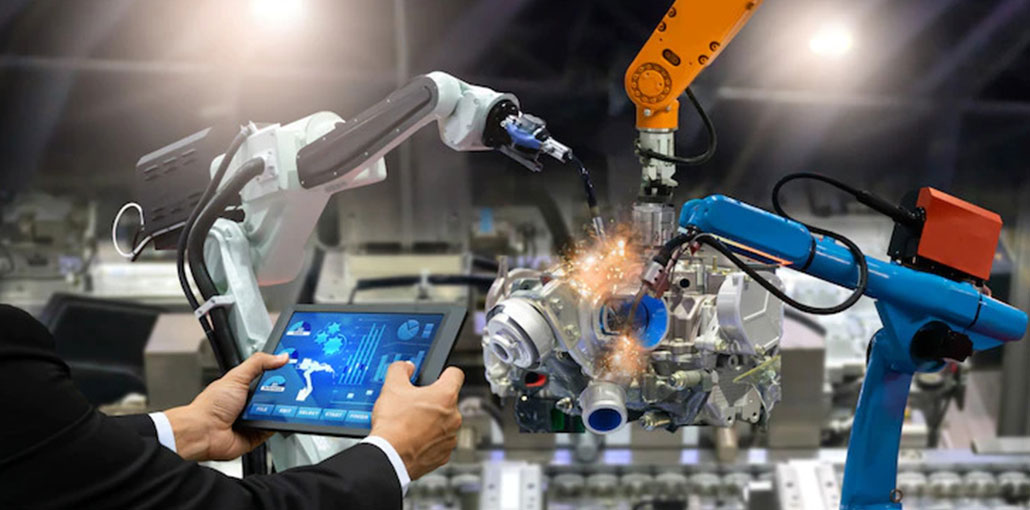A brand that is successful not only pays attention to its workers and the manufacturing process but also the product development is a success. There are two types of product development cycles: pre-launch and after-launch.
This blog will examine the role of machine learning and artificial intelligence in product development.
What is Product Development?
When a product is launched in the market, The brand’s R&D department continues to look for ways to improve. It includes all stages involved in product development, from idea or concept to launch on the market.
The stages of Product Development
However, product development is different for different brands and products. Each brand’s needs and requirements will dictate the stage of product development. The following are the most common strategies used in product development:
Identify Market Needs
Products are created to meet market needs and customer requirements. It is crucial for brands to understand market needs in order to keep their products updated and improved. You can do this by having healthy conversations with potential customers and conducting surveys or other user research.
Also read: How to Build AI Powers Modern Product Lifecycle Management
Quantifying the Opportunity
Organizations must determine how much they can afford and How many people will pay for their solutions?
Conceptualize the Product
Design teams must put in the effort and use their creativity to design products that meet the needs of customers.
Validate the Solution
After conceptualizing and setting the product. Validating the products is crucial. It is important to validate the product before you make any investment. The owner can decide to reject the idea and avoid paying large expenses.
Product Roadmap
Keep in mind a valid product idea The team should create a product roadmap. This map identifies the goals and themes. These are the key points that must be solved in order to develop and improve the product.
Create the MVP
MVP is shorthand for a minimum viable product. It’s the first version of the product. It only contains sufficient functionality to be useful to customers.
Release the MVP Beforehand in Market
Launch MVP in the market before you launch your product. These tests can help you gauge interest and prioritize marketing channels. They also test the packaging and sensitivity. MVP release can provide feedback, suggestions, and complaints that will help prioritize the product development process and fill the product backlog.
Iteration
Iteration continues based on feedback from users and strategic goals an essential strategy. Customers’ feedback is essential to improve the product, expansions, and changes related to the product. These are the strategies that can be used to improve your business. Although product improvement is an ongoing process, the product roadmap will continue to evolve over time. This will allow for new goals and observations.
What is the Role of AI in Product Development?
The advent of AI and ML algorithms facilitated product design and product improvement centers for enterprises. Businesses are using a variety of AI and ML techniques to help them develop and launch new products and improve existing ones.
Unlike traditional data-gathering technologies, AI and ML offer the best options for businesses. AI also helps to gain competitive advantages and speeds up product development.
These are some of the ways that AI can be used to help product development in startups, companies, and established businesses:
- Assure that your peers are successful in product integration.
- Product development teams can use AI and ML algorithms during the development cycle.
- This will help you achieve greater economies of scale, efficiency, and speed gains throughout the entire product development process.
- Assist in the following three areas of product development: digital prototyping and PLM, as well as product profile management.
- Allow organizations to choose the best configuration from the many possible options.
- Provide the organization with insights into its product development process on a large scale.
- Assist with neural network integration.
- Perform a deep analysis of price elasticity and sensitivity.
- Deep analysis is required to minimize energy costs and negative price variations of the product.
- Assist with cost management, strategic Sourcing, and procurement in the new product development process.
- Offer a variety of customization options, This helps in the creation of tune propensity models.
- Next-generation frameworks and thinking can be empowered.
- Systems that reduce the time it takes to show products while increasing product quality.
- Enhance product adaptability and cater to customer needs.
- Assist generative designs.
- Assistance in identifying product design constraints.
- Assistance in developing an optimized product.
Also read: How AI is Help in Visual Online Branding
Benefits of AI in Product Development
Let’s now look at the advantages and benefits of machine learning and AI in product development. These are the main benefits:
Generative Design
A program that generates different outputs according to the requirements of an organization is called generative design. Engineers and designers need to set design parameters and goals in order to generate a generative design.
These requirements include materials, manufacturing methods, and alternative designs. The software then uses ML algorithms to extract information from each iteration, and ultimately understand the concept. AI and ML generate a range of options. It can be used to augment human work.
Assembly Line Optimization
AI aids in product development by optimizing assembly lines. Let us consider an example, If an equipment operator is feeling tired, the supervisor and technicians are notified. The system activates contingency plans, and other reorganization activities automatically.
Create a Virtual Copy
AI is used to create a virtual copy or a replica of a physical production line. This can be a machine asset or an entire machinery system. These digital copies allow for real-time diagnosis, evaluation, prediction, tic, and visualization of product performance.
These digital copies are assisted by data science engineers using AI and supervised ML algorithms. This entire process is made possible by processing historical data and unlabeled data collected from real-time monitoring. Virtual models are useful in order to optimize production scheduling, quality improvements, and maintenance.
Predictive Maintenance
Prediction and forecasting are the main benefits of AI. AI technology helps identify potential downtimes and accidents through the analysis of real-time data.
AI allows technicians and supervisors predict failures before they actually occur. AI can increase the efficiency of development by reducing the costs of machine failure.
Inventory Management
Planning activities can be promoted by an AI algorithm. AI tools are more accurate than traditional methods. Better inventory control can help reduce critical situations like cash-in and out-of-stock.
Sometimes inventory management is also called stock management. It involves the ordering, purchasing, selling, and maintenance of inventory for a company.
Quality Guarantee
Quality assurance is the final process that ensures the quality of products or services. It basically checks the quality of the products delivered by the company.
Quality assurance was a manual task since the beginning of time. AI and image processing algorithms now allow for technical validation of whether the item was developed and produced in the correct way. This automatic, real-time check has made product development easier.
Quick Decision Making
The process of selecting the best combination from a variety of existing options is called decision-making. AI and ML algorithms are more efficient than traditional methods at making decisions about any product.
Process Optimization
Process optimization is basically used to ensure the sustainability of a product on the market. AI software allows organizations to optimize their production and development processes at all levels to ensure sustainable production. It can identify bottlenecks and eliminate them.
It is clear that AI is the future for companies and enterprises. AI offers a multitude of combinations and possibilities that enable organizations to harness its many advantages. AI and its algorithms can only work with input requirements. AI does not have a brain and will only use the data it receives.










Leave a comment